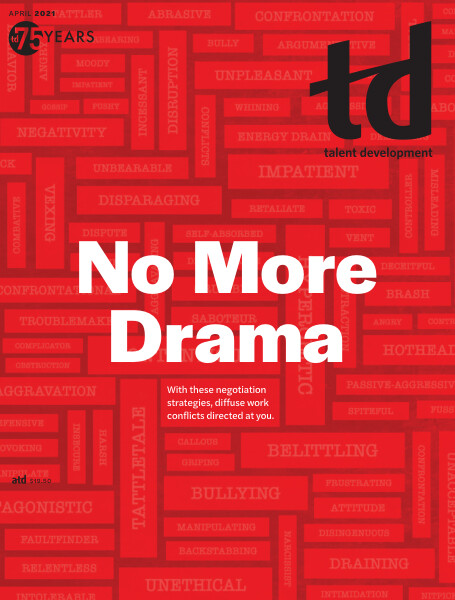TD Magazine Article
Embrace Community for Peer Learning
Use the power of many to solve business challenges.
Thu Apr 01 2021
Communities of practice are one way for individuals to learn from each other. But as Maggie Romanovich explains in "Expand Employee Learning With Communities of Practice," they are different from mentoring and other types of peer learning. CoPs are based on three elements: domain (the group's focus), practitioners (the individuals who form the group and who are practicing in the domain), and community (the group's interaction and trust).
These communities can come together on their own spontaneously or through formalized effort. Talent development professionals can also take the lead to establish CoPs to showcase and use high performers' and employees' expertise to help others or to bring practitioners together to solve a common challenge in a practice area.
Regardless of how the groups form, they may need encouragement and support. The groups must foster discussion to be successful. Romanovich advises talent development professionals to help cultivate participation by following the advice of Etienne Wenger, Richard McDermott, and William Snyder:
Ensuring that there's a structure in place for the CoPs to adapt over time
Encouraging diversity of thought by including a variety of perspectives
Allowing individuals to engage at different commitment levels
Opening some conversations publicly but allowing for private interactions
Centering activities on value brought to members and the company
Establishing expected routines while allowing for some spontaneity
Setting up a predictable and familiar cadence
Romanovich also points out that although CoPs often occur naturally when colleagues work in the same space, CoPs aren't limited to in-person meetings.
These tips were adapted from the April 2021 issue of TD at Work. Learn more at td.org/TDatWork.
You've Reached ATD Member-only Content
Become an ATD member to continue
Already a member?Sign In

